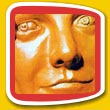


|
|
Homemaking
Having started as an agricultural society in 1879, Edmonton Northlands reflects a unique commitment to every aspect of rural life—including homemaking. There were few labour-saving devices widely available during the late 19th century, and little in the way of prefabricated goods, so that farm work had to be divided between tending the fields and processing their bounty by hand. Because of this necessity, sewing was as important an agricultural art as sowing, and the traditional division of labour had women occupied with one, while men did the other.
 For over 60 years, the Edmonton Exhibition hosted a special category,
under the auspices of its agricultural show, called "women’s work."
Needlework, crocheting, and handicrafts all fell into this group.
Organizers held blind competitions involving qualified entries, and an
expert panel judged the results. These events became popular enough
that, by the 1920s, H. H. Miller Groceries offered to double any prize
awarded the winning entry in the exhibition’s baking
competition—provided its creator used Blue Willow baking powder as
an ingredient.
For over 60 years, the Edmonton Exhibition hosted a special category,
under the auspices of its agricultural show, called "women’s work."
Needlework, crocheting, and handicrafts all fell into this group.
Organizers held blind competitions involving qualified entries, and an
expert panel judged the results. These events became popular enough
that, by the 1920s, H. H. Miller Groceries offered to double any prize
awarded the winning entry in the exhibition’s baking
competition—provided its creator used Blue Willow baking powder as
an ingredient.
These events, and the special offers surrounding them, were big draws for women who had come to take in agricultural exhibits. As early as the 1930s, however, some petitioners were calling for a name change in the belief that calling craft and handiwork exhibits "women’s work," displayed as they were in the Women’s Building, alienated men and boys. Others were concerned that the event title called up images of drudgery, rather than of the delightful crafts submitted annually.
 About 20 years later, in 1951, the name of the
Women’s Building was
changed to 'Handicrafts, Needlework, and Culinary Exhibits,' in part as
a nod to the hospitalized Second World War veterans who were
contributing crafts. Similarly, "women’s work" became "art and women’s
work." Included under that heading were the usual standbys such as
needlework, culinary arts, and leather crafts, as well as new additions
such as photography and pottery.
About 20 years later, in 1951, the name of the
Women’s Building was
changed to 'Handicrafts, Needlework, and Culinary Exhibits,' in part as
a nod to the hospitalized Second World War veterans who were
contributing crafts. Similarly, "women’s work" became "art and women’s
work." Included under that heading were the usual standbys such as
needlework, culinary arts, and leather crafts, as well as new additions
such as photography and pottery.
As the social role of women changed through the 1960s and 1970s, so too did certain conventions of the women’s show. Rather than participating in its events only through the production of articles for display and competition, as their mothers and grandmothers had done, women were increasingly viewed as consumers who could respond to advertising and sales pitches.
This new emphasis on sales did not decrease the show’s popularity. In 1976 the "women’s work" components, which had been unified and renamed "Design for Living," moved to a larger building where submitted work was successfully exhibited for a number of years.
 Northlands Park still hosts exhibits and shows designed
primarily for women, including wedding showcases. The
Alberta Spring and Fall Gift Show and the Home and Garden Show also
attract women buying decorative materials, even while the Edmonton
Woman’s Show—another targeted event—is successful in its seasonal home
at the AgriCom.
Northlands Park still hosts exhibits and shows designed
primarily for women, including wedding showcases. The
Alberta Spring and Fall Gift Show and the Home and Garden Show also
attract women buying decorative materials, even while the Edmonton
Woman’s Show—another targeted event—is successful in its seasonal home
at the AgriCom.
The definition of homemaking has, in some ways, expanded to include things such as decorating even while other demands are excluded. Organizers at Northlands Park, as well as those who exhibit on-site, are constantly adapting to keep pace with changes.
|
|
|
4-H and other rural youth programs Homemaking |
 |





